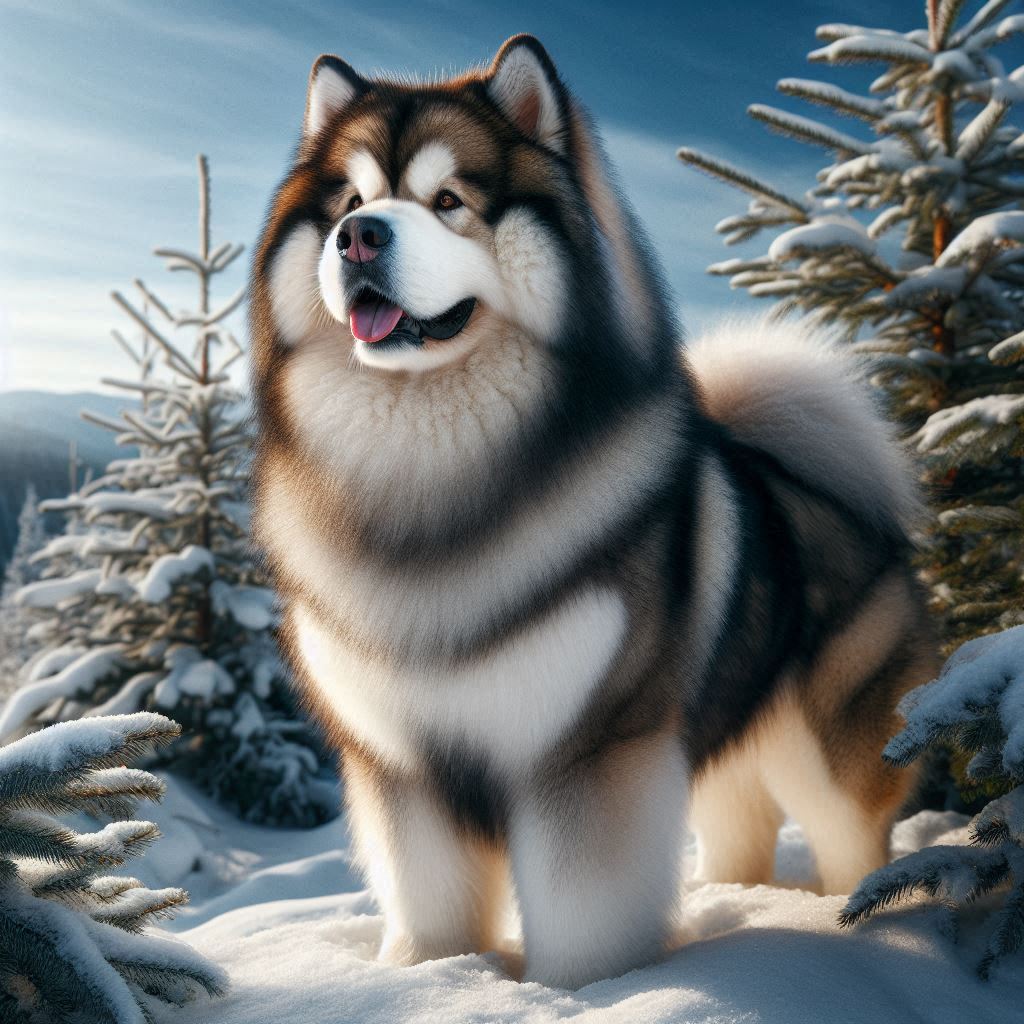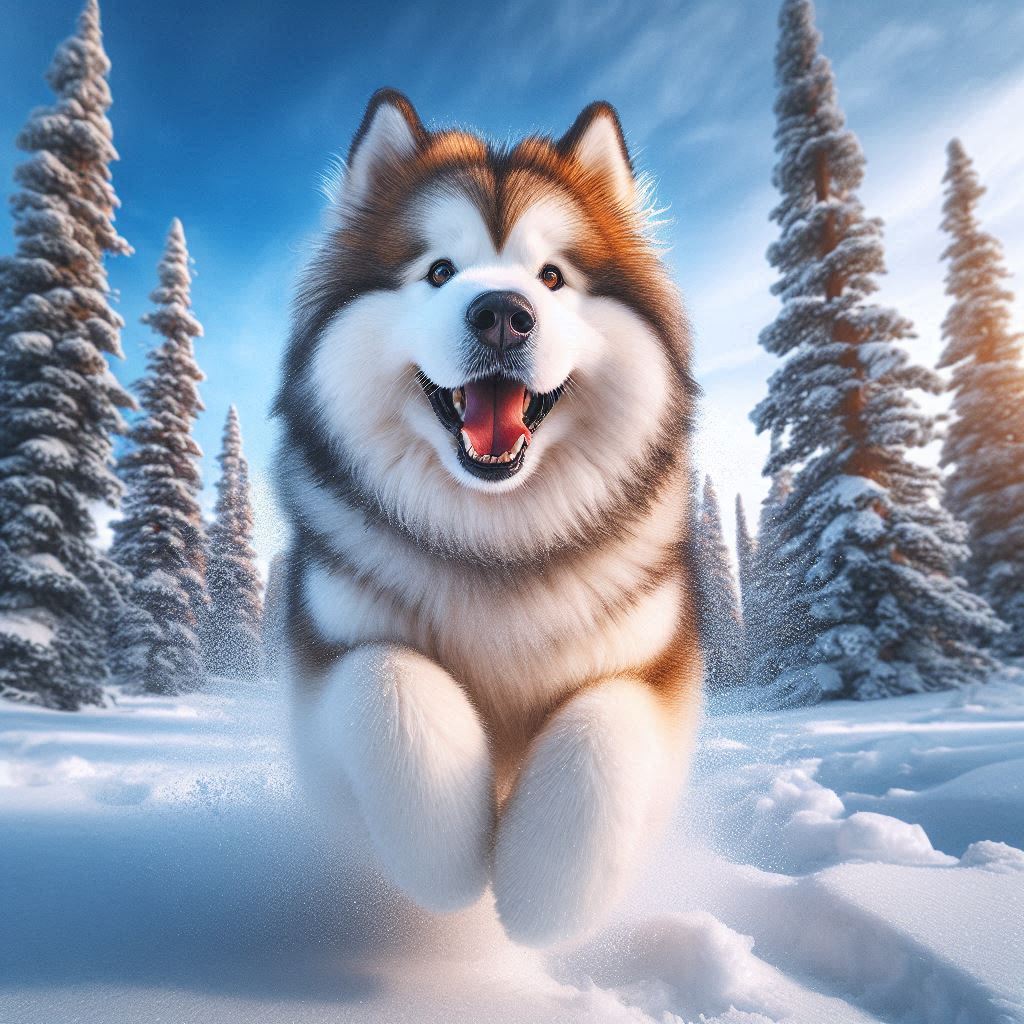Alaskan Malamute
The Alaskan Malamute is one of the oldest and strongest Arctic sled dog breeds, originally developed by the Mahlemut Inuit people of Alaska. Bred for strength and endurance, these dogs were primarily used to haul heavy loads across long distances in harsh, snowy environments.
Physically, they are large, powerful dogs with thick, double coats that protect them from extreme cold. Their coat colors typically include combinations of gray, black, red, or sable with white. Unlike the Siberian Husky, Malamutes have brown eyes and are bulkier and more muscular.
Temperamentally, Alaskan Malamutes are affectionate, loyal, and playful but also strong-willed and independent. They are known for their intelligence and vocal nature, often expressing themselves with “talking” or howling rather than barking. While friendly with people, they can be dominant with other dogs and are not well-suited for inexperienced owners.
They require significant exercise and mental stimulation, making them better suited to active households with space to roam. Their high energy and thick coats also make them more comfortable in cooler climates.
Though no longer widely used as sled dogs, Malamutes remain beloved as companion animals and are celebrated for their history, strength, and majestic appearance.

Alaskan Malamute
Classification
- Kingdom: Animalia
- Phylum: Chordata
- Class: Mammalia
- Order: Carnivora
- Family: Canidae
- Genus: Canis
- Species: Canis lupus familiaris (domesticated dog breed)
- Breed Group: Working Group (AKC)
Physical Characteristics
- Size: Large (Males: ~25 inches tall, 85–100 lbs; Females: slightly smaller)
- Coat: Thick, double-layered coat; coarse outer guard hairs with dense, woolly undercoat
- Color: Shades of gray, black, sable, red with white markings; always white on underbody and parts of face
- Eyes: Brown (blue eyes are considered a fault in breed standards)
- Ears: Triangular and upright
- Tail: Plumed and carried over the back

Habitat
- Originally bred in Arctic regions, especially Alaska
- Adapted to cold, snowy environments
- Now commonly found as companion animals worldwide, especially in colder climates
Diet
- Type: Carnivorous/Omnivorous (as domesticated dogs)
- Typical Diet: High-protein commercial dog food, raw diet, or a balanced homemade meal
- Traditionally: Fed high-fat diets to support energy in sled-pulling tasks
Behavior
- Intelligent and independent, but affectionate
- Social with people but can be dominant with other dogs
- High energy level; needs regular exercise
- Strong prey drive — may chase smaller animals
- Not typically suitable for off-leash activities due to wandering instincts
- Known for being vocal (wooing/howling rather than barking)
Reproduction
- Litter Size: Typically 4–10 puppies
- Maturity: Around 18–24 months
- Breeding: Generally seasonal, especially in colder regions
- Gestation Period: ~63 days
Conservation Status
- Domesticated breed – Not subject to conservation status
- However, traditional working lines are less common due to modern breeding for appearance over function
Fun Facts
- One of the oldest Arctic sled dog breeds
- Named after the Mahlemut Inuit tribe of Alaska
- Known for incredible strength: bred to haul heavy freight
- Often confused with the Siberian Husky, but Malamutes are larger and less fast
- Played roles in historical expeditions, including polar explorations
- Can survive extremely cold temperatures due to their thick coat